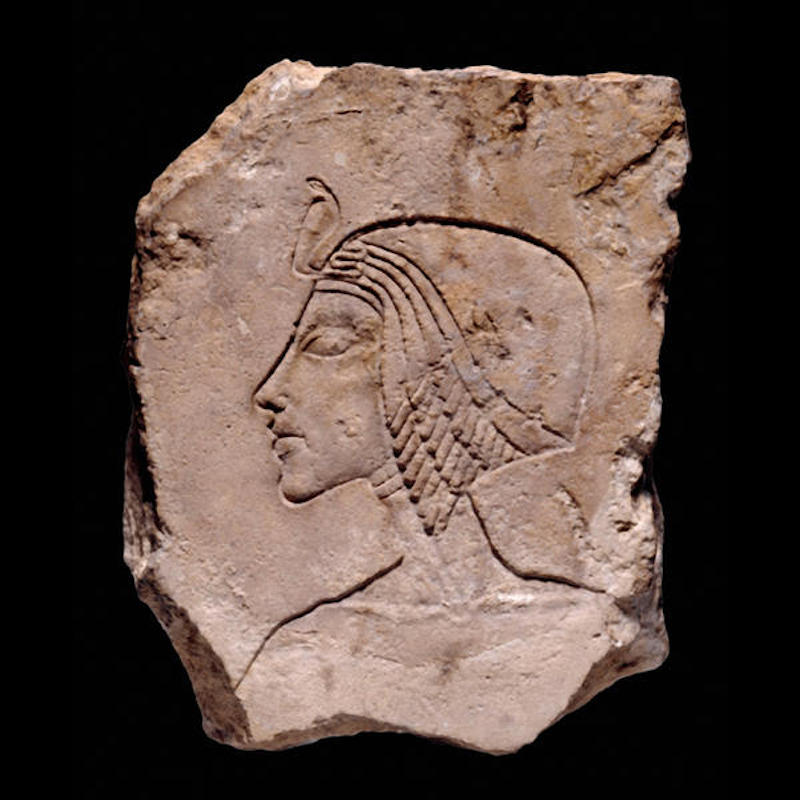The artistic style of the Amarna Period (1390-1327 BC) is distinctive. Human figures are often set in very untraditional poses; they have thin necks, prominent stomachs, and their jaws are elongated. The distinctive neck and face are well illustrated in this limestone fragment, which shows a king, possibly Akhenaten (Amenhotep IV, reigned c. 1390-1352 BC), wearing a plaited wig. This type of headdress appears only in the Amarna Period. The fragment is probably a sculptor's trial piece, many of which have been found at the site.
Many reasons have been offered to explain the style of the Amarna Period, but none is entirely satisfactory. Perhaps the simplest explanation is that Akhenaten needed to make a clear distinction between the artistic output of his reign and that of previous periods.




Limestone fragment with the head of a king
limestone • Height: 17.50cm; Width: 14.00cm; Depth: 5.70cm
 Unknown Artist
Unknown Artist